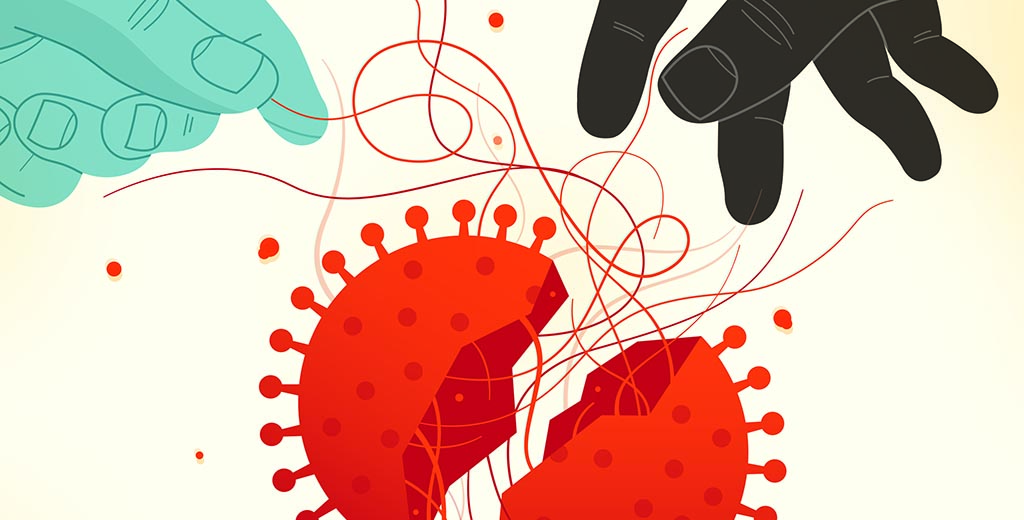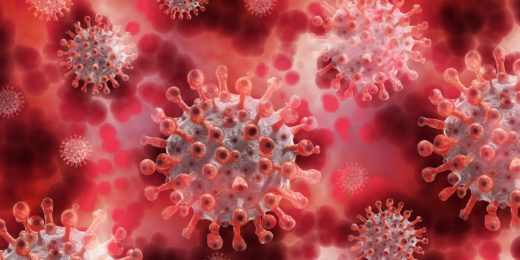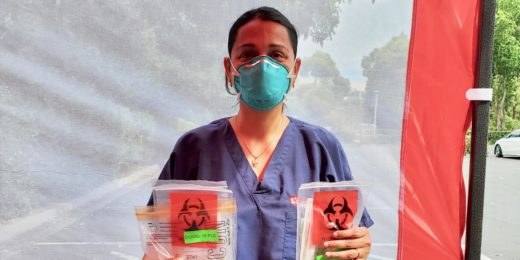Early on in the COVID-19 pandemic, it became clear that it was all-hands-on-deck at Stanford Medicine -- and scientists and researchers were no exception. Dozens of labs across the School of Medicine's campus pivoted to address one of the most serious health crises the world has seen.
Through foresight and sheer determination, they have made striking progress in viral testing, treatments and vaccines, and in furthering the basic understanding of SARS-CoV-2, the virus that causes COVID-19.
In a sampler story I wrote for a special issue of Stanford Medicine magazine focusing on COVID-19, I feature several examples of faculty research that aim to unravel the mysterious nature of the virus and address the challenges the disease has brought to health care and society at large.
In one example, David Lewis, MD, a professor of pediatrics, immunology and allergy, and his colleagues are harnessing CRISPR-Cas9 (the Nobel-winning gene-editing technology) to prime the body to fight off COVID-19. If you're thinking that sounds like a vaccine, you'd be right. But it doesn't function in the way as a typical shot-in-the-arm vaccine does. As I explain in the story:
The CRISPR-based tactic turns [the traditional vaccine] approach on its head, directly targeting the virus instead of revving up host immunity. The team is using a special CRISPR system that deploys a molecule called Cas13D that "digests" or cuts other RNA molecules. ... The idea is to use Cas13D as a first line of defense for the body. In essence, Cas13D would act like a vicious bouncer, stopping the virus from replicating in the host cells it enters by chopping the virus into tiny pieces.
Tracking for geographic hot spots
Lorene Nelson, PhD, associate professor of epidemiology and population health, is thinking outside the body, turning her attention to health inequities caused or exacerbated by the pandemic.
Nelson and a team of researchers, including collaborators at Google Cloud, have initiated an effort they call a "geospatial data ecosystem," which aims to identify the social and demographic factors that contribute to an elevated risk for COVID-19.
In addition, the data ecosystem locates certain geographic hot spots of infection and can even predict which locations will experience a surge in the future.
"More data leads to a clearer understanding of the social drivers of risk for this virus. We can use the insights gained to direct interventions in the neighborhoods that need it most," Nelson told me during an interview for the story.
Finding ways to expand testing
Other researchers are focused on testing, investigating new ways to administer accurate, widespread viral detection.
Epidemiologist Yvonne Maldonado, MD, professor of pediatric infectious diseases and of health research and policy, launched a study called Community Alliance to Test Coronavirus at home, or CATCH. The goal which is to facilitate widespread testing in the San Francisco Bay Area through kits that can be ordered online and sent to individuals by mail.
To learn more about the innovative and thoughtful ways Stanford Medicine researchers are targeting COVID-19, check out the full story.
Image by Harry Campbell
Read more from Stanford Medicine magazine's special report on COVID-19 here.






